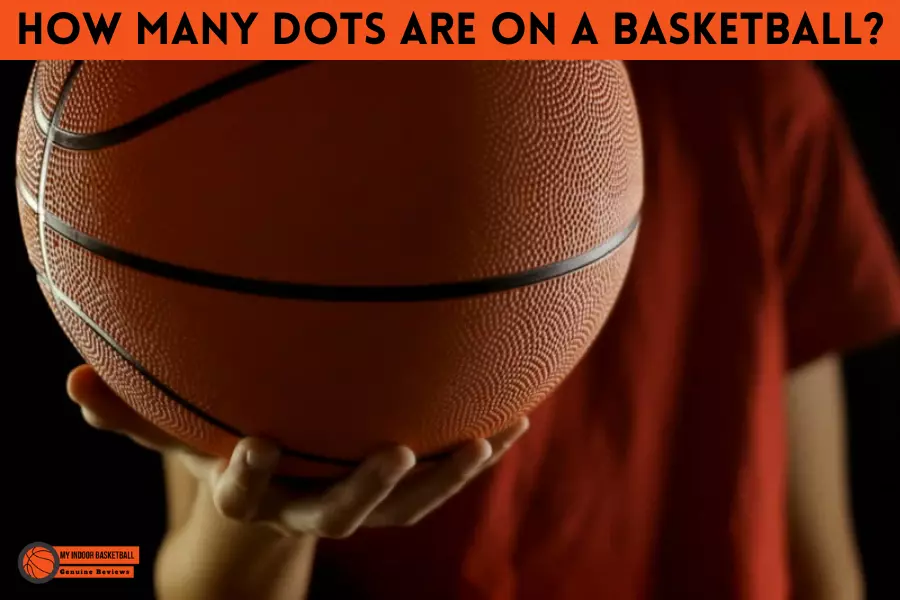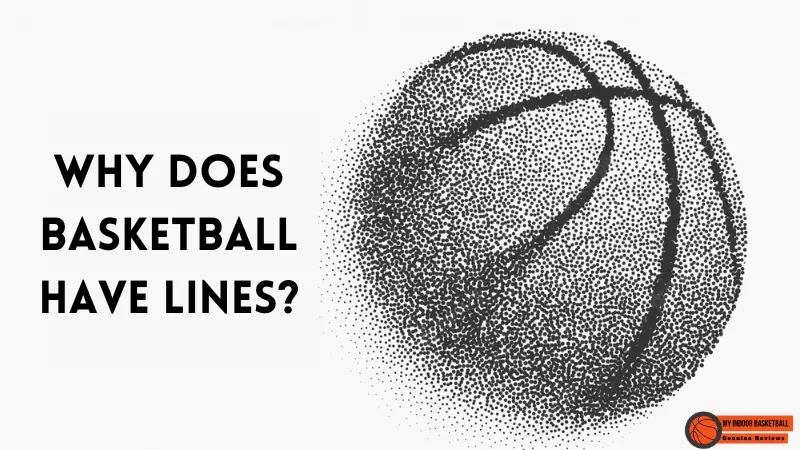How Many Dots are on a Basketball? [Experts Facts reveal]

The game of basketball has been around for over a century. During that time, the ball became more durable and easier to handle. However, one thing that has remained constant is the number of dots on a basketball. So, how many dots are on a basketball?
There are a total of 122 dots per square inch on a basketball. There are eight panels, four of the panels are located near the seams and are used as grip points for players. The other four are located at the center of each side of the ball and are used for shooting accuracy.
While the number of dots on a basketball may seem small, they play an important role in the game. The grip points help players control the ball while dribbling and shooting. The center dots provide a reference point for shooters to ensure they are hitting their target.
Basketball Structure
A basketball is a round, inflated ball used in the game. The ball is usually made of leather or synthetic leather and is filled with air. It is inflated to a pressure of about 7-9 pounds per square inch and has a diameter of about 9-10 inches. A basketball typically has eight panels and two rows of stitching. The ball’s surface is smooth, and the seams are flush with the surface.
A regulation basketball has 24 stitch panels and between 210 and 280 raised bumps or “pebbles.” The number of pebbles on a basketball is often said to be 321, but that number refers to the old leather-covered balls. The 24-panel ball was introduced in 1930 and became the standard by the 1950s.
Basketballs have a black and white checkered pattern and are made of synthetic rubber. They are inflated with air and have 28.5 to 29 inches. They weigh between 20 and 22 ounces. The surface of a basketball is covered with small; round bumps called pebbling.
The number of dots on a basketball
There are a total of 94 dots on a basketball. The dots are evenly distributed around the ball’s surface and are spaced apart by about 1 centimeter. There are three sets of 30 dots, two sets of 12, and 1 set of 24. The official N.B.A. Rule Book states that the ball must have a smooth surface with no protrusions or indentations.
The history of the basketball
Basketball is a sport enjoyed by people of all ages around the world. The game has evolved, and the rules have changed to make it more enjoyable for everyone. One of the most notable changes is the number of dots on a basketball.
The very first basketballs were made with only one dot on them. This was done to make them easier to see when they were being dribbled down the court. People realized that one dot wasn’t enough as the game became more popular. They wanted to see more of the ball when it was in play.
Eventually, the basketballs were made with three dots on them. This allowed people to see the ball better when it was in play and made it easier to shoot. The three-dot basketball became the standard for many years and is still used today in some places.
Basketball design process
When it comes to designing a basketball, many factors come into play. One of the most important factors is how many dots are on a basketball. The number of dots on a basketball can vary depending on the manufacturer, but most balls have between 8 and 12 dots. The number of dots also affects the ball’s grip, which is an important consideration for players and coaches.
Why does basketball have lines?
How many dots are on a basketball? and Why does a basketball have lines? Well, it turns out that the dots on a basketball are there for a reason. It might seem like an odd design choice, but the dots help players control the ball.

The size and spacing of the dots on a basketball are carefully regulated by the International Basketball Federation (F.I.B.A.). They must be between 0.8 and 1.2 centimeters in diameter, and they must be spaced evenly around the ball. There are typically between 24 and 34 dots on a basketball.
Why do basketballs have lines and panels?
Basketballs have either eight panels or 24 panels. The 8-panel ball is used mostly for professional play, while the 24-panel ball is used more for recreational play. There are also different sizes of basketballs; the regulation size is 29.5 inches in circumference, while a smaller size is 28.5 inches in circumference.
The reason basketballs have lines and panels is so that players can grip the ball better when they are shooting or dribbling. The balls are made of leather or synthetic materials, and the lines help create a rougher surface so players can get a good grip on the ball.
Why do basketballs have dots or pebbles?
Most people don’t know that the dots on a basketball are there for a specific reason but do you know “how many dots are on a basketball”? The dots, or pebbles, help players better grip the ball. When players are shooting, dribbling, or passing, the added grip gives them more control over the ball.
The dots also help the ball bounce more evenly. If you’ve seen a basketball bounce off a hard surface, you know it doesn’t always bounce in a perfect circle. The dots help to stabilize the ball so that it bounces more predictably.
What is a basketball ball made of?
A basketball is a round, inflated ball used in basketball. The ball is made of an outer shell of rubber or synthetic leather and an inner bladder of either latex or butyl. It is typically inflated to a pressure of 8.5 to 9.5 pounds per square inch (psi).
The size of a basketball varies by league and age group. In the N.B.A., the ball measure 29.5 inches in circumference and weighs 22 ounces. In F.I.B.A. play, the ball is 28.5 inches in circumference and weighs 22 ounces. For women’s play, the ball is 27.6 inches in circumference and weighs 20 ounces.
The benefits of having fewer dots on a basketball
The number of dots on a basketball can vary, typically between eight and nine. The benefits of having fewer dots on a basketball include improved grip and control and increased accuracy. Fewer dots also make it easier to see the ball’s seams, which can be helpful for shooters.
The drawbacks of having fewer dots on a basketball
When it comes to basketballs, the more, the merrier. That’s because the more dots on a basketball, the better it is for players. Fewer dots might make for a prettier ball, but that doesn’t do anything for its performance. Fewer dots can be detrimental to a ball’s handling.
That’s because the gripping action of a player’s fingers relies on the friction created by the small bumps on the ball’s surface. The more bumps there are, the better grip a player will have. So if you want to shoot some hoops with friends or play a HORSE game in your driveway, make sure you choose a basketball with plenty of dots. Your game will thank you for it.
Conclusion: How many dots are on a basketball?
A basketball ball has a black and white checkered pattern, consisting of 18 black hexagons and 12 white pentagons. Each black hexagon has six vertices, while each white pentagon has five vertices. It is believed that the number of dots on a basketball can affect its bounce and handling characteristics. Some players prefer a ball with more dots, while others find that fewer dots provide a better grip.






